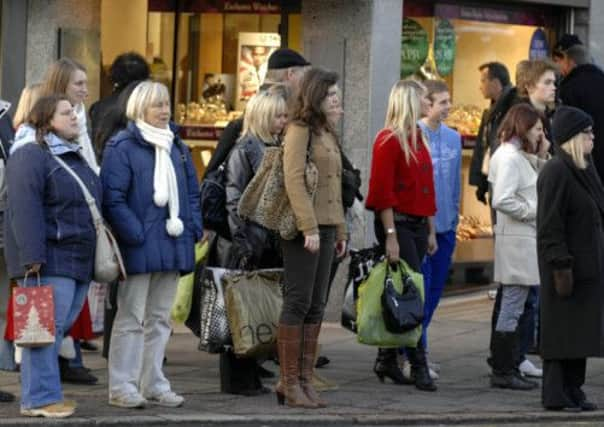Shop margins slashed as retailers chase sales


The drop in the cost of products accelerated last month, according to data released today by the British Retail Consortium (BRC). Experts warned that retailers will have to focus on price cuts and multi-buy offers in order to attract customers.
Overall shop prices fell by an annual rate of 0.2 per cent in June, having fallen by 0.1 per cent in May. The decrease was triggered by an acceleration in non-food price deflation, with costs dropping by 1.9 per cent last month compared with a fall of 1.5 per cent during the previous month.
Advertisement
Hide AdAdvertisement
Hide AdIn contrast, food inflation continued to rise during June, accelerating to an annual 2.7 per cent from 2.4 per cent in May.
Increases in the price of beer, soft drinks and vegetables stoked the first month on month rise in food-price inflation for seven months.
Helen Dickinson, director general at the BRC, said: “Shop prices fell at their fastest rate since February 2007, building on the downward trend that we saw in May. The deflation is driven entirely by non-food, a reflection that the summer sales are well underway as retailers battle it out to shift stock and compete for customer spending.”
She added: “The volatile weather also had a part to play in pushing down non-food prices. It’s telling that the categories that saw some of the deepest discounting – clothing, footwear, furniture and DIY – were those whose sales were hit the hardest during the lingering cold snap.
“Food inflation has edged up marginally since the near three-year low seen in May, driven by slight increases in ambient and fresh food prices. However, I would expect it to remain fairly stable over the medium term.”
Official data released last week by the Office for National Statistics (ONS) pointed to continued weakness in household disposable income, which fell by 1.7 per cent during the opening three months of the year.
Mike Watkins, head of retailer and business insight at market research firm Nielsen, which helped to compile the figures, said: “Shoppers are indicating that they still need to economise in 2013 so underlying demand remains weak, particularly in non-food where price deflation continues.
“The story is a little different in food, however. After a three-year low point in shop price inflation and a slight recovery in volume growth in the past six months, and with promotion spend plateauing, some seasonal cost price increases are again filtering through to the shelf.”
Advertisement
Hide AdAdvertisement
Hide AdHe added: “If this trend continues, it will set the shoppers’ agenda for the next six months and food retailers may need to focus on simple price cuts as well as multi-buys in order to drive footfall and spend.”
The consumer prices index (CPI), the UK government’s preferred measure of inflation, rose to 2.7 per cent in May from 2.4 per cent in April, driven by a rise in the cost of transport, including air fares. Inflation has stubbornly remained above the target set for the Bank of England of 2 per cent.